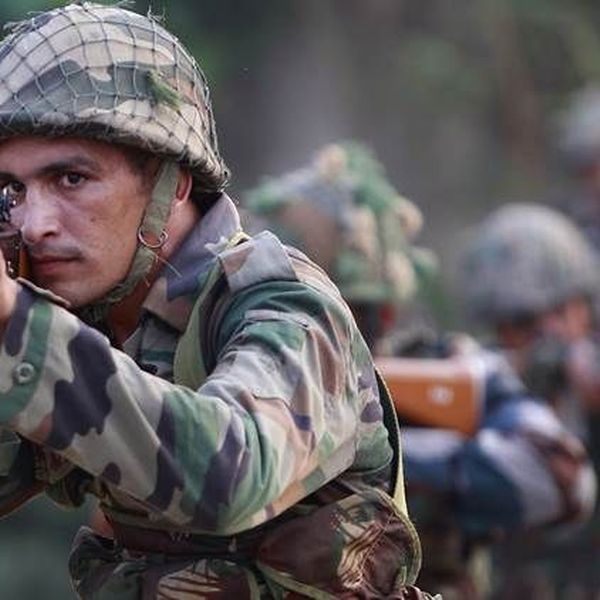Indian forces have done a commendable job in conventional warfare but are less prepared in case of non-traditional security challenges that India is going to face in the near future. From state versus state typical conflict — in the main for territorial gains — the pendulum is slowly swinging towards sub-conventional conflict between states and ill-affected non-state actors.
The biggest concern is whether the Army is structurally and technologically modern to meet the present as well as future challenges?
The future threats that Indian Army can face shortly can be:
-
NBC (Nuclear and Biological) holding neighbor’s animosity behavior along with proxy war and terrorism.
-
Internal disturbed areas exceeding police forces and central agencies like the North-Eastern region of India.
-
Information warfare is emerging world widely.
‘We have to change as the nature of warfare is changing. New structures have to be created by incorporating modern technology. That’s the way forward. These changes, reforms, will not happen overnight, but they will happen.”[endnoteRef:3] There is a very high probability that the next major land conflict on the Indian sub-continent will again break out in the mountains because that is where the unresolved territorial disputes lie. On another hand, it will be an upper hand for our army in a way because they had recently a war in 1999(Kargil war) which gave a good exposure to the commanders which will guide them to learn new techniques.
To be an agile, lethal and capability-based force to tackle the challenges of future warfare restructuring, transformation and reorganization is must. However, it should be done without ignoring the conventional aspect. Ministry of Defence approved the proposal of restructuring by Army in which small but effective steps are taken.
-
Reorganisation of the Army Headquarters’
-
‘Reorganisation and rightsizing of the Army’
-
‘Cadre review of officers’
-
‘Review of terms of engagement of rank and file’
In the current reorganisation, the following changes are made in restructuring The Army Headquarters (AHQ):-
At Present: – Two Deputy Chiefs for:
-
Information systems & training.
-
Planning and systems
After Change: – Three Deputy Chiefs for:
-
Sustenance
-
Strategy
-
Information Systems
· Director General (DG), Rashtriya Rifles, to move to Udhampur under an Additional Director General (ADG):
-
New post of ‘ADG Vigilance’ to be created. Will report to Army Chief.
-
Army Training Command based in Shimla to be moved to Meerut.
-
New ‘ADG Human Resources’ will track investigations and action on HR violations.
-
The number of officers in AHQ to come down by over 200. Young officers to be posted out to field areas.
Effective restructuring is the result of a perfect balancing of manpower, weapons and force multipliers within the budget while restructuring the organisations of units/ formations is only one aspect. The aim should be to optimise doctrines and concepts; restructure higher defense organization and the field force; manage high-grade internal conflicts; streamline logistics; and upgrade human resource development. In terms of latest weapons and equipment India is in good terms with superpowers.
However, effective structuring of an organization is must and primary things, equipment and machinery come next. Warfare is experiencing a paradigm shift towards non-contact and stand-off capabilities, Autonomous Weapon Systems (AWS), electronic warfare, cyber capabilities, Artificial Intelligence (AI) and robotics into war-fighting, technologies like Nanotechnology, Quantum Computing, High Energy (HE) Lasers, Directed Energy weapons, Hypersonic weapons, Swarm attacks through Drones, Pulsed Microwave Weapon Systems, and Micro Satellites that can have a crucial impact on the battlefield. For Example, cyber warfare can target systems that help logistics.
Conclusion
In this new milieu, the defense forces must not only retain a combat edge in conventional operations but also handle sub-conventional challenges effectively.
Change is no doubt will be difficult, as we are highly conservative. India is now genuinely poised to shine. It cannot do so with a feeble military machine, which functions on ad hoc basis or the glorious past. We need to revamp and restructure before we face the challenges we have talked about. The need today is for a synergistic and visionary national approach for the strong, purposeful and modern India that is just over the horizon. India’s increasing responsibilities as a net provider of security in the Indo-Pacific region will require the creation of tri-Service capabilities for military intervention. Above all, we must rapidly modernise our artillery and modernise and expand our army aviation corps as also the air defense corps. We must speedily overcome the night blindness of the tank fleet and enable the infantry to fight effectively by night with the provision of night sight to every individual. The small arms need to be made more lethal, compact and lightweight.

